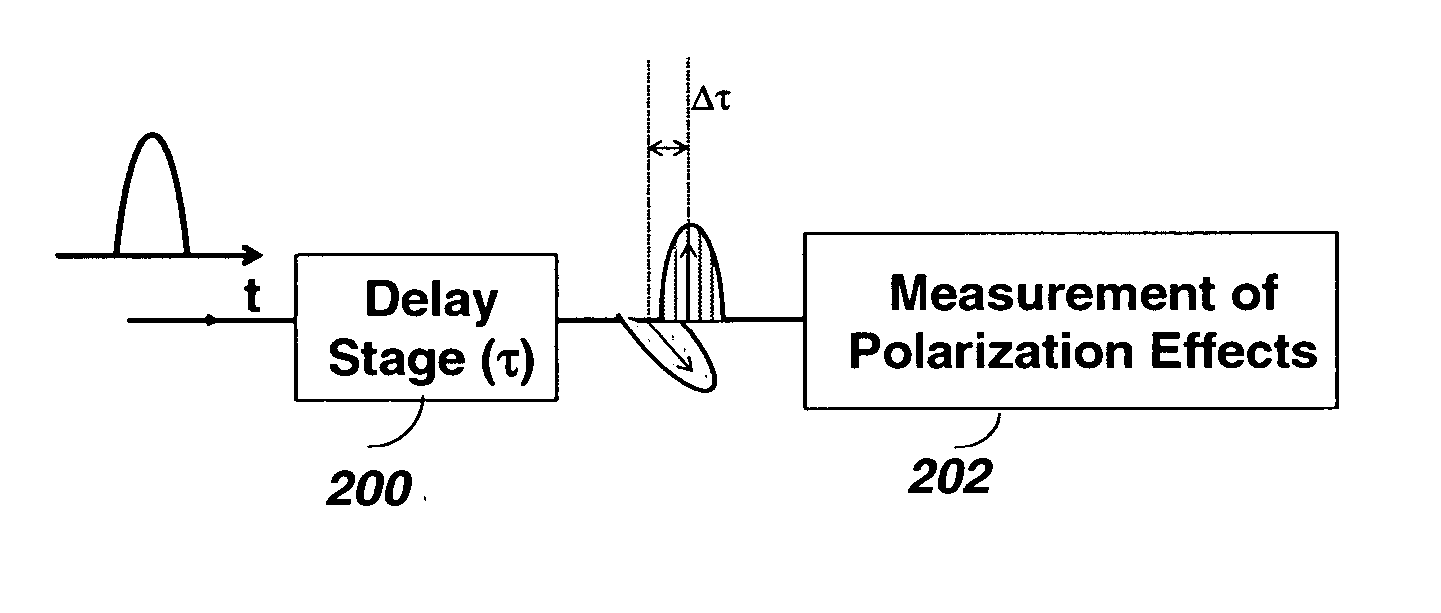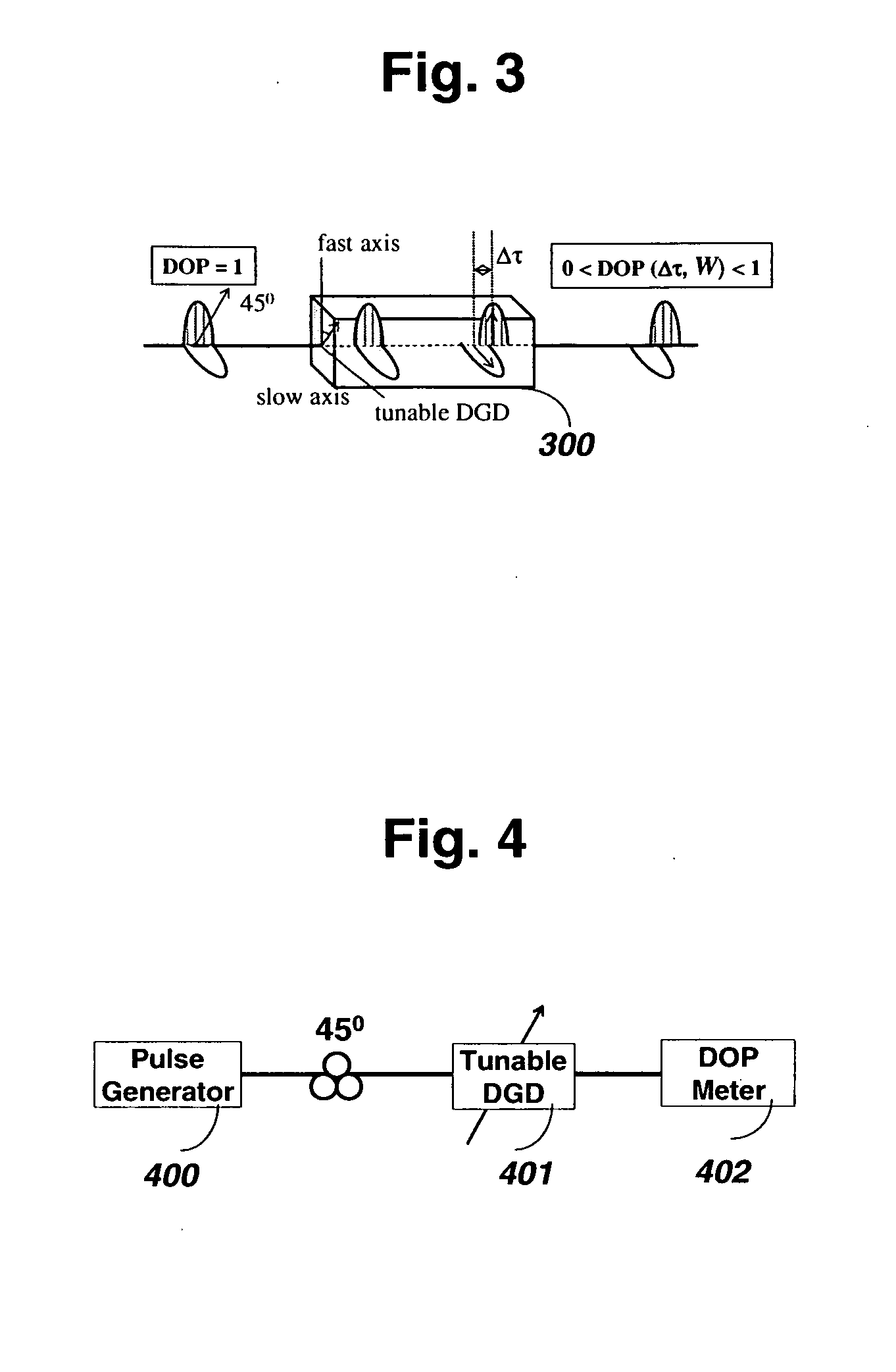Autocorrelation Technique Based on Measurement of Polarization Effects of Optical Pulses
a technology of polarization effect and correlation technique, which is applied in the direction of optical radiation measurement, instruments, measurement devices, etc., can solve the problems of amplification of optical pulses and usually significant alignment of frees, and achieve the effect of accurately calculating pulse temporal width
- Summary
- Abstract
- Description
- Claims
- Application Information
AI Technical Summary
Benefits of technology
Problems solved by technology
Method used
Image
Examples
Embodiment Construction
[0023] As shown in FIG. 1, in prior art, an incoming pulse is split in half by a free-space delay stage 100, with one half delayed relative to its twin. These two pulses impinge on a nonlinear crystal 102, for which a new optical signal is generated using second-harmonic generation (SHG) only where the two optical twin pulses overlap in time. The pulse width can then be derived by changing the time delay between the twin pulses. A key drawback of this typical configuration is that it requires a fair amount of alignment of the free-space optics. And the power of the input pulse should be high in order to induce nonlinear optical second-harmonic generation in the crystal.
[0024] In the present invention, as shown in FIG. 2, the optical pulse is split into the two orthogonal polarization components in a delay stage 200 and these two replicas have a tunable relative delay. The two replicas are combined after 200. By tuning the relative delay of the two replicas and measuring the polariz...
PUM
 Login to View More
Login to View More Abstract
Description
Claims
Application Information
 Login to View More
Login to View More - R&D
- Intellectual Property
- Life Sciences
- Materials
- Tech Scout
- Unparalleled Data Quality
- Higher Quality Content
- 60% Fewer Hallucinations
Browse by: Latest US Patents, China's latest patents, Technical Efficacy Thesaurus, Application Domain, Technology Topic, Popular Technical Reports.
© 2025 PatSnap. All rights reserved.Legal|Privacy policy|Modern Slavery Act Transparency Statement|Sitemap|About US| Contact US: help@patsnap.com



